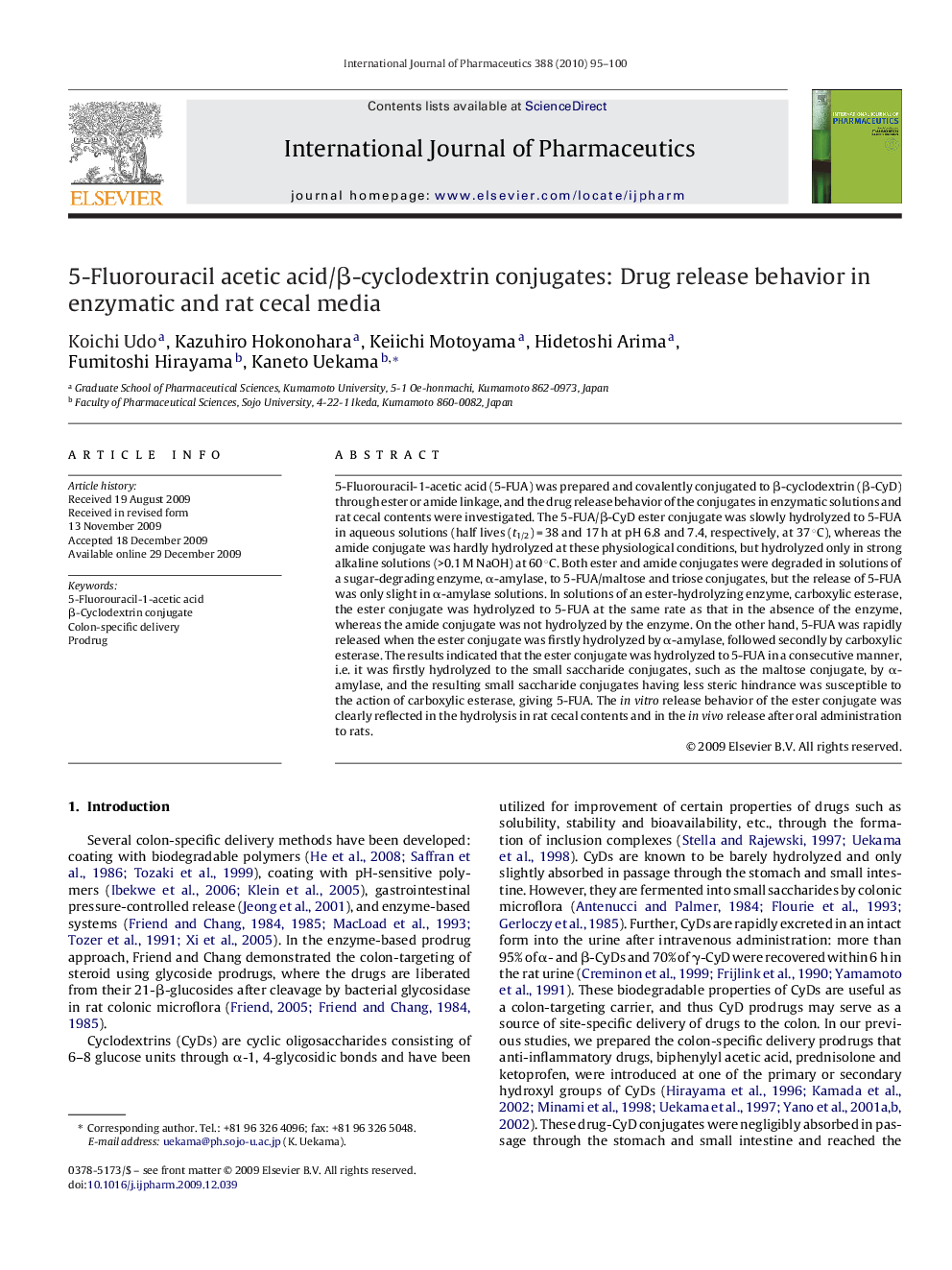| Article ID | Journal | Published Year | Pages | File Type |
|---|---|---|---|---|
| 2504403 | International Journal of Pharmaceutics | 2010 | 6 Pages |
5-Fluorouracil-1-acetic acid (5-FUA) was prepared and covalently conjugated to β-cyclodextrin (β-CyD) through ester or amide linkage, and the drug release behavior of the conjugates in enzymatic solutions and rat cecal contents were investigated. The 5-FUA/β-CyD ester conjugate was slowly hydrolyzed to 5-FUA in aqueous solutions (half lives (t1/2) = 38 and 17 h at pH 6.8 and 7.4, respectively, at 37 °C), whereas the amide conjugate was hardly hydrolyzed at these physiological conditions, but hydrolyzed only in strong alkaline solutions (>0.1 M NaOH) at 60 °C. Both ester and amide conjugates were degraded in solutions of a sugar-degrading enzyme, α-amylase, to 5-FUA/maltose and triose conjugates, but the release of 5-FUA was only slight in α-amylase solutions. In solutions of an ester-hydrolyzing enzyme, carboxylic esterase, the ester conjugate was hydrolyzed to 5-FUA at the same rate as that in the absence of the enzyme, whereas the amide conjugate was not hydrolyzed by the enzyme. On the other hand, 5-FUA was rapidly released when the ester conjugate was firstly hydrolyzed by α-amylase, followed secondly by carboxylic esterase. The results indicated that the ester conjugate was hydrolyzed to 5-FUA in a consecutive manner, i.e. it was firstly hydrolyzed to the small saccharide conjugates, such as the maltose conjugate, by α-amylase, and the resulting small saccharide conjugates having less steric hindrance was susceptible to the action of carboxylic esterase, giving 5-FUA. The in vitro release behavior of the ester conjugate was clearly reflected in the hydrolysis in rat cecal contents and in the in vivo release after oral administration to rats.
